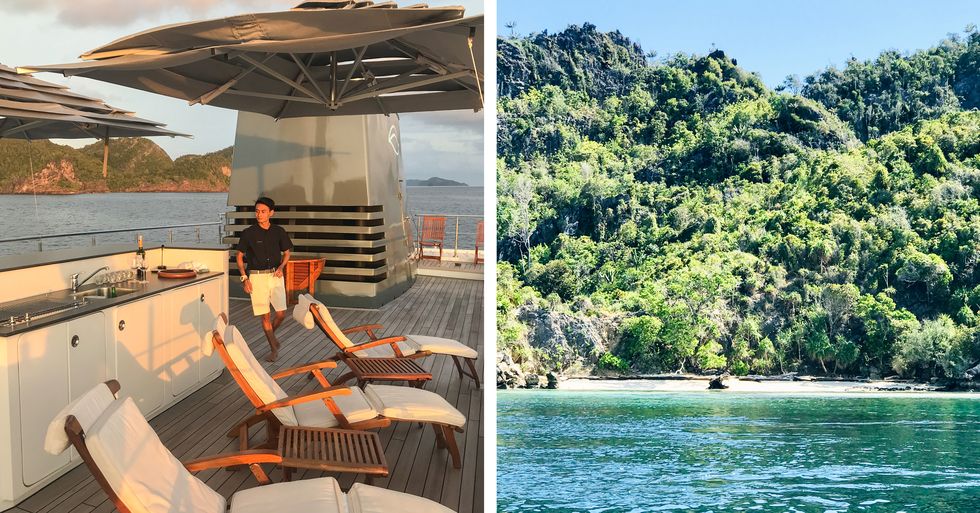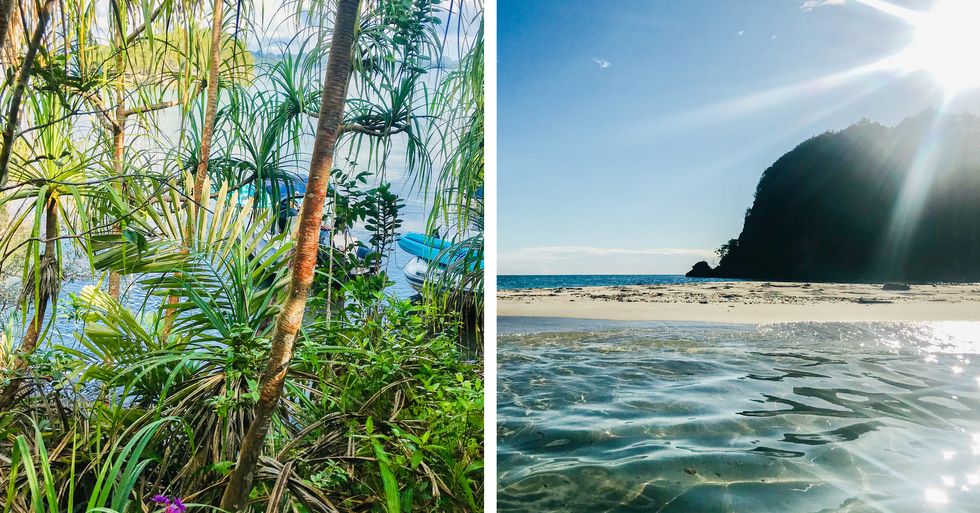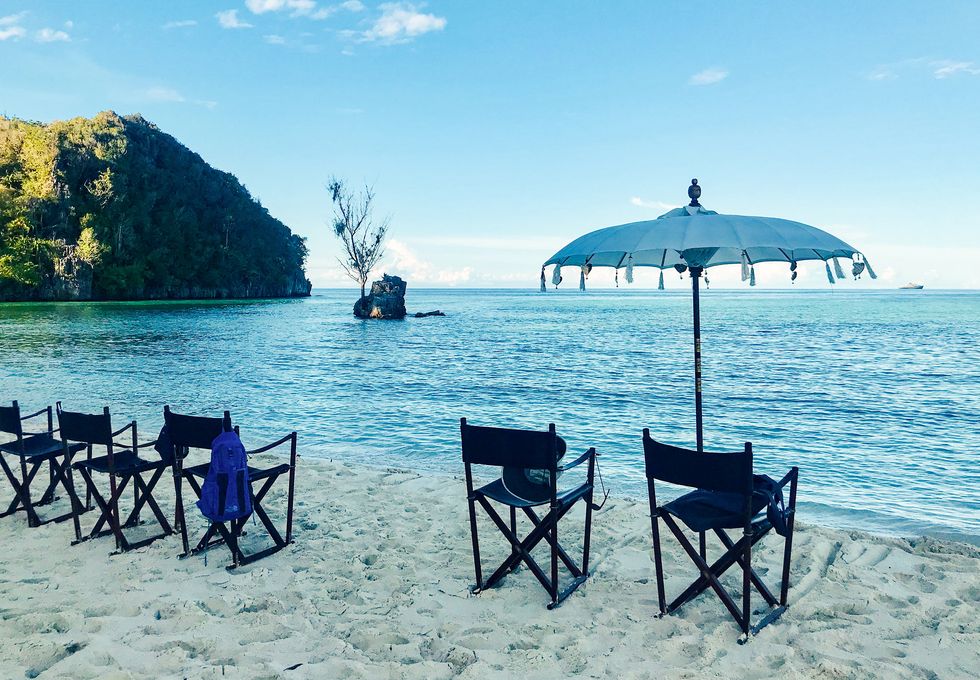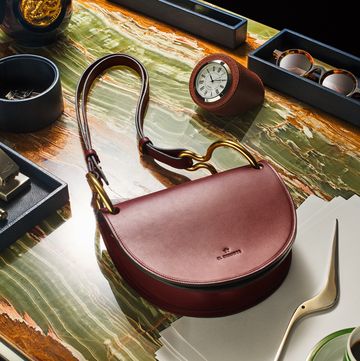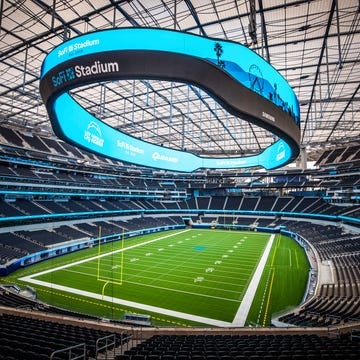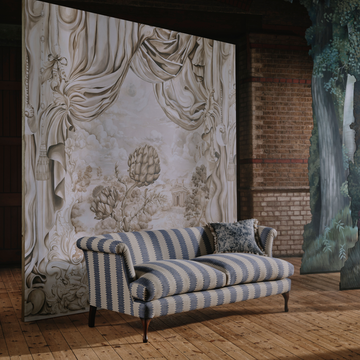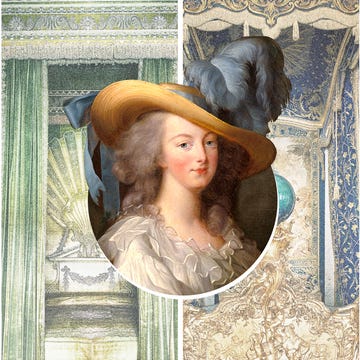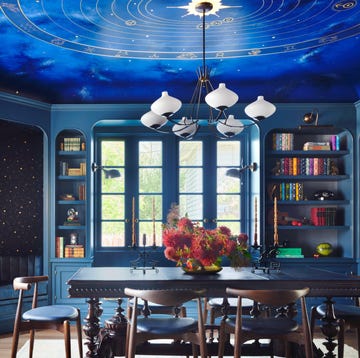“Arrival is never easy,” said Serge Aliba, the Aqua Blu’s Lebanese-born acting cruise director soon after we boarded the ship in Sorong. To get to this ramshackle tropical port city, at the tip of the Bird’s Head Peninsula in the eastern Indonesian province of West Papua, I had to endure (in pre-pandemic January 2020) a 16-and-a-half-hour flight from New York to Hong Kong; a five-hour airport layover; a four-and-a-half-hour flight to Jakarta; an eight-hour layover; and a four-hour flight to Sorong. (“So wrong,” a British friend who had traveled here earlier had quipped.)
But distance, for me, is part of travel’s allure. A trip may have some quick charm, but a voyage—arrival difficulties are implied—conjures discovery, the shedding of routines, the feeling of being unbound. If you’ve done a lot of traveling, that craving for the faraway, and the existentially remote, gets harder to satisfy. So when, 10 years ago, I started hearing about an Indonesian archipelago with a fetching name, Raja Ampat, I took note. A few travel pioneers had chartered private boats to explore it, and Sorong was the gateway.
How remote is Raja Ampat? Let’s put it this way: Not far from these islands, in the interior of Papua (the huge island that used to be called New Guinea) there are tribes that to date have had no contact with the outside world, and villages, uncontacted and contacted, where cannibalism is still practiced (not for food, but ritualistically, in times of war). “There are travelers who want time with the tribes,” Aliba told me. “It’s a spiritual thing.”
That, for me, might be a step too far. But everything else about Raja Ampat sounded fantastical, in the best possible way. It is 17,000 square miles of crystalline water straddling the equator at the intersection of the Pacific and Indian oceans that is dotted with more than 1,500 steep, jungle-covered limestone islands, many uninhabited, some with slivers of white sand beach. And beneath the surface of the water lies the richest reef environment on earth. Raja Ampat, which means “four kings” in Bahasa Indonesia, the country’s common language (the name is a reference to the four largest islands), is the crown jewel of a 2.3 million–square mile marine region called the Coral Triangle. (In addition to Indonesia, the triangle encompasses parts of Malaysia, the Philippines, Papua New Guinea, Timor-Leste, and the Solomon Islands. It is so called due to its staggering number of reef-building corals—nearly 600 species—which nurture a similarly staggering number of reef fish—more than 2,000 species.)
The unique natural abundance of this island-strewn expanse between Australia and Asia has a geologic provenance: We are in the heart of the Pacific Ring of Fire, the horseshoe-shape belt along which lie most of the earth’s active volcanoes. They account for 90 percent of the planet’s earthquakes and eruptions—super-fertilizer events, the nutrients from which flow into the warm seas. Indonesia has 76 active volcanoes, the most of any country.
“Fifteen years ago no one really came here,” says Aliba (which is astonishing, considering Indonesia’s population is 273 million). “Ten years ago there were several boats.” I’m finally here (what’s a 38-hour plane-and-airport marathon when I’ve been waiting a decade?) because I found just the right vessel on which to explore. I love wildness, but I also love creature comforts, and the Aqua Blu, the newest boat operating in Raja Ampat, fit the bill. It’s small (just 15 suites), with large sunbeds on deck, a hot tub and spa treatment room, superb food (something for which its sister ships, navigating the Amazon and the Mekong, are also known), and a crew of 27, including guides who are all dive masters.
The ship is steel-hulled, not a phinisi, one of the graceful, wooden, multimast boats that traditionally ply Indonesian waters. But it has a top-notch expedition pedigree. The ship was built in 1967 as a British Navy explorer called the HMS Beagle, in honor of the vessel that carried Charles Darwin around the world in the 1830s. Converted in 2006 into a private yacht for a Milanese family, it sailed the Mediterranean before being transformed (and rechristened) in late 2019 by Aqua Expeditions into its current commercial incarnation, designed for trips of various lengths around Indonesia. Our band of 14 travelers—arrived here from the United States, England, and Australia—is on one of its first seven-day sailings in Raja Ampat.
“Take it slow. The slower you swim, the more you will see,” says Kaz Kazzuaeni, our head guide, who hails from Lombok, near Bali. We’ve assembled on the main deck for our first morning’s briefing. Two tenders are bobbing in the water, at the ready. We’re sporting rash guards and wet suits, masks, fins, and tanks for those who are diving (not me). The whiteboard says “Mioskan,” the island we approached during the night, and there is also a chart of the day’s tides and a detailed drawing of Mioskan’s underwater landscape with its depths: two meters at the point of disembarkation, then five, then dropping to 10, 15, and 22-plus. This will not be like snorkeling off a Caribbean beach.
“We will enter water too deep to stand in,” Kaz says, in case any of us missed that point, and goes on with the rest of the drill. “Guides will check the current and decide if it’s okay to drift. They will carry a safety buoy to mark their location and the position of the boats—you should always be able to see them. If you cramp up, pull off fin and massage. Wiggling your hand like this [he demonstrates] means there’s a problem. Don’t touch anything: We have bacteria on our hands. Unless you see a piece of white coral—white means it’s dead.” (I won’t see any of that. Raja Ampat, at least for now, appears impervious to the destruction of marine habitats caused by global warming, perhaps because of its naturally warm waters and strong currents.)
Yet I wonder: Are we going to see anything at all? It’s drizzling, the sky is gray, the water is dark. “You will see more,” Kaz says. “The bad weather stirs up the nutrients in the sea, so fish will be more active.”
“Oh my god!” exclaims Nancy G., a seasoned snorkeler and diver from Los Angeles who is the first to slip into the water. “There are fish in here!” I put my head in, and it’s as if I’ve fallen into another dimension, a silent kaleidoscopic world of entirely unexpected textures, colors, light, and movement. Colorful fish—solitary, in small groups, in large schools—swim in mysterious patterns, evanescent works of art. In 2001 Gerald R. Allen, an American-born Australian ichthyologist, noted 283 species on a single one-hour dive off Cape Kri (we’ll be going there), setting a world record—which he broke in 2012 when he recorded 374 species during another dive. The count for all of Raja Ampat is some 1,400. (Allen’s discovery launched the scientific study of the archipelago, as well as tourism. “He’s the reason,” Aliba says, “that we’re all here.”)
I don’t mind that we’re far from shore and far, too, from the mothership, which, last time I checked, was a dark shape near the horizon. The water is warm, and my breathing slows, as does my sense of time. At some point Kaz appears at my side and gestures toward a sea anemone, the predatory underwater animal that resembles a flowering plant. A tiny orange, black, and white–striped fish is hovering symbiotically among the anemone’s venom-emitting green tentacles. Even I know this little unit: It’s an anemonefish, or clown fish—aka Nemo. I look closer: He’s swishing about, resting momentarily, swishing again. But staying always in the same spot, as if rooted. We surface so Kaz can explain. “It’s a male, and he is oxygenating the eggs. It’s the male’s job. He’ll be doing this for six to 10 days, until the eggs hatch. The more he fans and the better he fans, the more will hatch.”
I float above him for a long time, reluctant to leave this solitary little champ, who is oblivious to my existence and so tirelessly, heroically performing his duty in his parallel universe.
We go out twice daily, after breakfast and an hour after lunch, three or four hours at a time. There are about 200 dive sites all over Raja Ampat. I start out trying, as I would in my normal, reasonably organized life, to keep track of them and studiously note their characteristics: Mioskan, Cape Kri, Freewind Bunda, Mayhem, Andiamo, the Candy Store, Neptune’s Kaftan. Same for the islands we are approaching: Gam, Bulbulol, Sagof, Daram, Batanta, Misool, Wail Batan, Waigeo. Soon, though, I give in to the fluidity of this linguistically and geographically ungraspable place. Even the guides aren’t helpful when I try to fact-check with them: “Too many places have names!”
But I’m loving this liberating bath in strangeness. We drift daily above submarine gardens and next to sheer cliffs covered in coral: soft, and bristly, and hard, in all shapes, textures, and colors. The coral is round, fanlike, covered in protuberances, or resembling waving fingers. It is pale pink, lavender, magenta, yellow, beige, green. Some of it sways and shimmies with the currents. I notice coral that looks as if it’s flowering with zucchini blossoms—which suddenly take flight. “Feather stars,” a guide tells me. I hover around a pink and white muricella coral that resembles delicate flowering tree branches—and conceals, as Kaz shows me, a pygmy seahorse that has managed to assume the exact same appearance. “Isn’t the world beautiful!” someone exclaims.
We are mostly alone amid the beauty—“we” being the Aqua Blu people, who after a few days feel like family. Now and then a phinisi appears in the distance, masts picturesquely silhouetted against a pink cloud. Once, I glimpse divers floating far below me in “the blue” (as the depths are poetically and accurately called). During a communal dinner, Grey H., a friend from New York who is traveling with me, exclaims, “I ran into two people I didn’t know in the water today, which is just rude,” and we all nod in appalled agreement, avid proponents of social distancing before it comes (little do we know) to rule our lives. Our occasional beach afternoons are Crusoe-esque (except for the provisions ferried over to us by the staff). We wake one morning to see a dramatic line of dark, sharp-peaked islands, like shark teeth on the horizon—some new part of the archipelago. Dolphins dance around the ship, and I feel just as gloriously buoyant and untethered. (This was a kind of psychic inoculation, I now sometimes think, against the constraints of the Covid lockdown to come.)
“Stay on the same path in the water that the guides are following. The current is very strong, and there might be sharks and barracudas,” we are told prior to the Cape Kri swim/dive. “It’s four meters at first, but then a very sharp drop, right down to 27 and 32 meters, which is where everything happens.” I bail quickly, I confess. It’s wild in that water, and anyway it will soon be time for sundowners in the ship’s Sky Lounge bar. Adrian Broadhead, the Aqua Blu’s Australian executive chef, admits that figuring out the right amount of liquor for Raja Ampat sailings is still a challenge: “People drink more because the sunsets are so beautiful.” Indeed.
“Enter the water quietly and calmly,” we’re told ahead of an excursion to a place called Dayang, where reef manta rays congregate. They are drawn to this spot because of its so-called cleaning stations, where fish called bluestreak cleaner wrasse attend to parasites and other impurities on the mantas’ skins. The instructions for the swim are emphatic, which is no wonder, as this is the second-largest species of manta in the world. “Do not splash—keep fins below the surface when you swim. Approach the mantas no closer than three meters. Better yet, let the manta approach you. Approach from the side, so they can see you. As with all fish, if you can see their eyes, it means they can see you. And never enter a cleaning station.” Roger that. Who would want to disturb the vital personal hygiene ritual of a creature with a wingspan of nine to 16 feet? (Reef fish, we learn, cannot survive without the ministrations of the cleaners.)
One island is home to thousands of bats. Native to a handful of others are several species of the extraordinarily plumed bird of paradise, whose mating displays Sir David Attenborough described in 1996 as “one of the most thrilling sights in nature.”
There are no directives about the bat island. We set off in two tenders just before dusk. “They migrate every evening to the neighboring island,” Gustian Kaonseng, another guide, explains. How many? “2,361,” he deadpans. The closer we draw, the more distinctly we can hear an unfamiliar cacophony of clicks, pings, chirps. And then we see them—first one, then five, then dozens and more, high above us, shooting up one after another from the dense vegetation and heading in the same direction, their black wings silhouetted against the darkening sky precisely like so many Batman logos. Venus, as if on cue, comes out from behind a cloud. Grey sums it up: “It’s like a magical other world where bats fly every night from one island to another for dinner.”
And where male birds of paradise dance every morning in the treetops at dawn. We set out one day at 4:45 a.m. from the ship for the island of Gam, climb for a half hour in darkness along a steep, rock-strewn path through the jungle, aided by ropes and a guide from the local village, and reach the top of an escarpment at first light. Tiny Gam is one of the only places on earth where the red bird of paradise (Paradisaea rubra), one of 14 subspecies, can be found. The Victorian naturalist Alfred Russel Wallace, Darwin’s co-theorist of evolution who spent eight years in these parts from 1854 to 1862, lived for seven weeks on Gam and considered the red bird of paradise probably the most “magnificent” of the “feathered tribes,” as he noted in The Malay Archipelago. And so, in silence and hope, we wait for one to grace us with an appearance.
Then, on a high, leafless branch of a tall tree, wings raised, neck arched and outstretched, his exquisitely shaped and colored plumage elevated and continually vibrating (rich red, deep yellow, metallic green), a male bird of paradise performs for his prospective mates. And, because we happen to be in this speck of a place on a sea we’ve never heard of, for us.
Planning a Trip: You can book the Aqua Blu by the cabin or as a takeover. At press time, U.S. citizens are allowed to enter Indonesia with a special e-visa, which Aqua Expeditions facilitates, and a negative PCR test. The ship is operating in the country without restrictions. In addition to the 7-night Raja Ampat sailing, itineraries include: Bali and Komodo National Park (7 nights); Ambon and the Spice Islands (7 nights); limited multi-destination repositioning cruises that touch on Raja Ampat, Komodo National Park, Moyo, Flores, the Forgotten Islands, Ambon and the Spice Islands (12 nights) For details and to book: Aqua Expeditions.
This story appears in the March 2021 issue of Town & Country.
SUBSCRIBE NOW

Klara Glowczewska is the Executive Travel Editor of Town & Country, covering topics related to travel specifically (places, itineraries, hotels, trends) and broadly (conservation, culture, adventure), and was previously the Editor in Chief of Conde Nast Traveler magazine.


